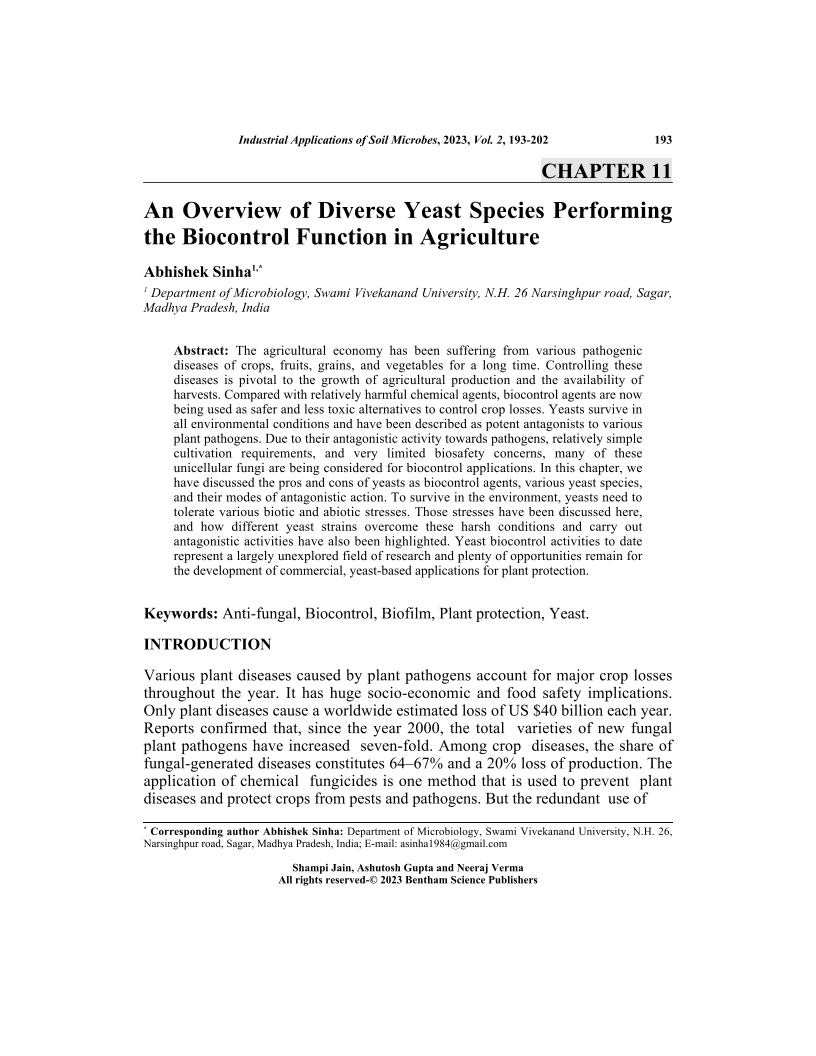An Overview of Diverse Yeast Species Performing the Biocontrol Function in Agriculture

- By Abhishek Sinha1
-
View Affiliations Hide Affiliations1 Department of Microbiology, Swami Vivekanand University, N.H. 26 Narsinghpur road, Sagar, Madhya Pradesh, India
- Source: Industrial Applications of Soil Microbes: Volume 2 , pp 193-202
- Publication Date: November 2023
- Language: English
An Overview of Diverse Yeast Species Performing the Biocontrol Function in Agriculture, Page 1 of 1
< Previous page | Next page > /docserver/preview/fulltext/9789815050264/chap11-1.gif
The agricultural economy has been suffering from various pathogenic diseases of crops, fruits, grains, and vegetables for a long time. Controlling these diseases is pivotal to the growth of agricultural production and the availability of harvests. Compared with relatively harmful chemical agents, biocontrol agents are now being used as safer and less toxic alternatives to control crop losses. Yeasts survive in all environmental conditions and have been described as potent antagonists to various plant pathogens. Due to their antagonistic activity towards pathogens, relatively simple cultivation requirements, and very limited biosafety concerns, many of these unicellular fungi are being considered for biocontrol applications. In this chapter, we have discussed the pros and cons of yeasts as biocontrol agents, various yeast species, and their modes of antagonistic action. To survive in the environment, yeasts need to tolerate various biotic and abiotic stresses. Those stresses have been discussed here, and how different yeast strains overcome these harsh conditions and carry out antagonistic activities have also been highlighted. Yeast biocontrol activities to date represent a largely unexplored field of research and plenty of opportunities remain for the development of commercial, yeast-based applications for plant protection. nbsp;
-
From This Site
/content/books/9789815050264.chap11dcterms_subject,pub_keyword-contentType:Journal -contentType:Figure -contentType:Table -contentType:SupplementaryData105

